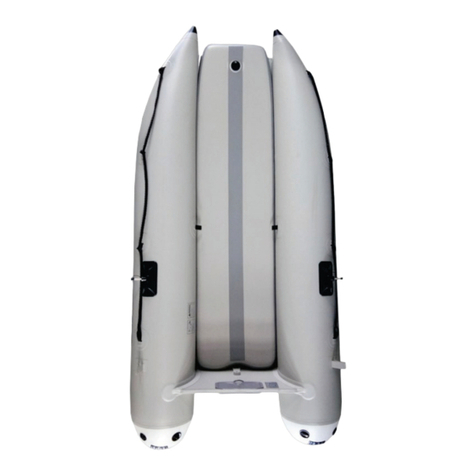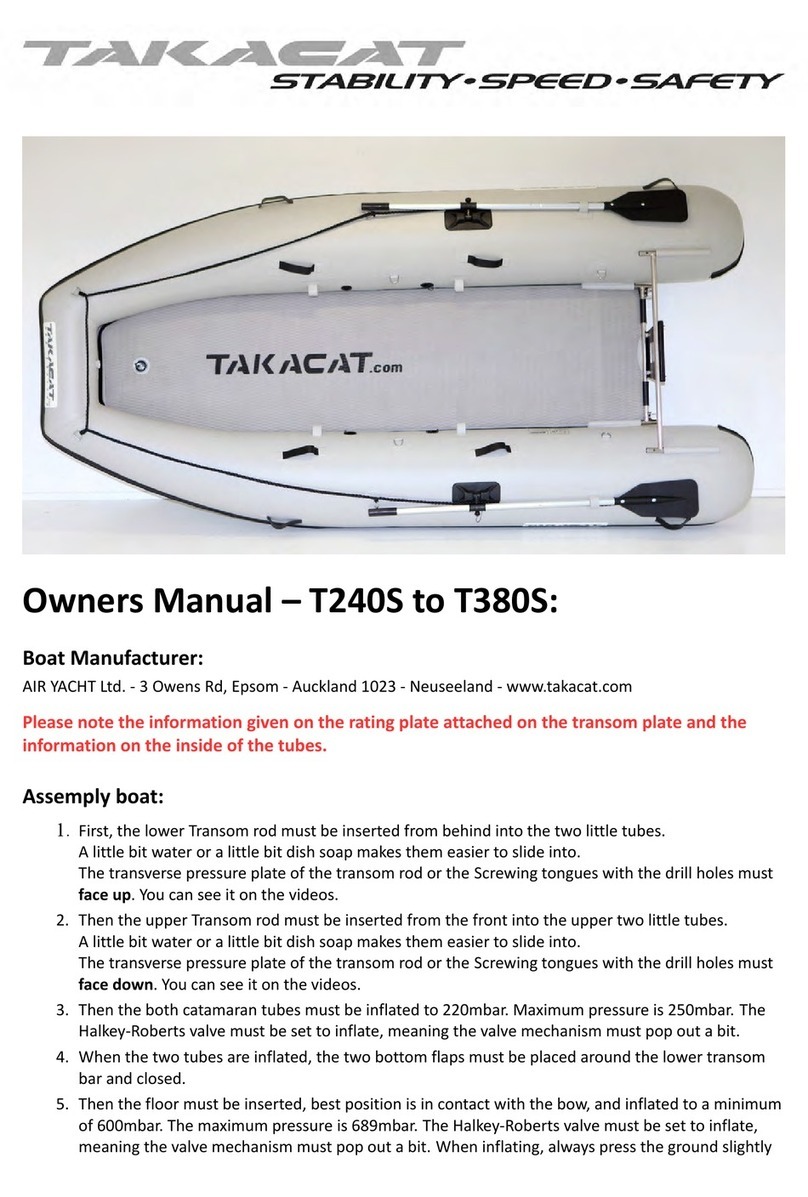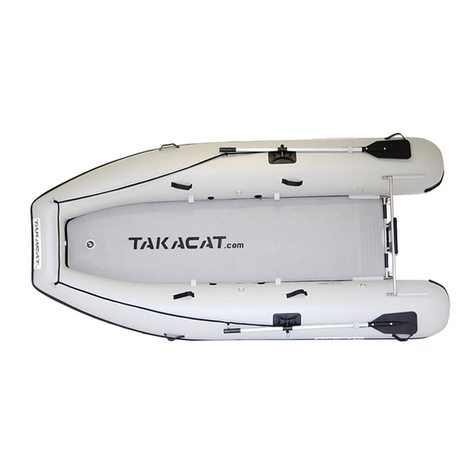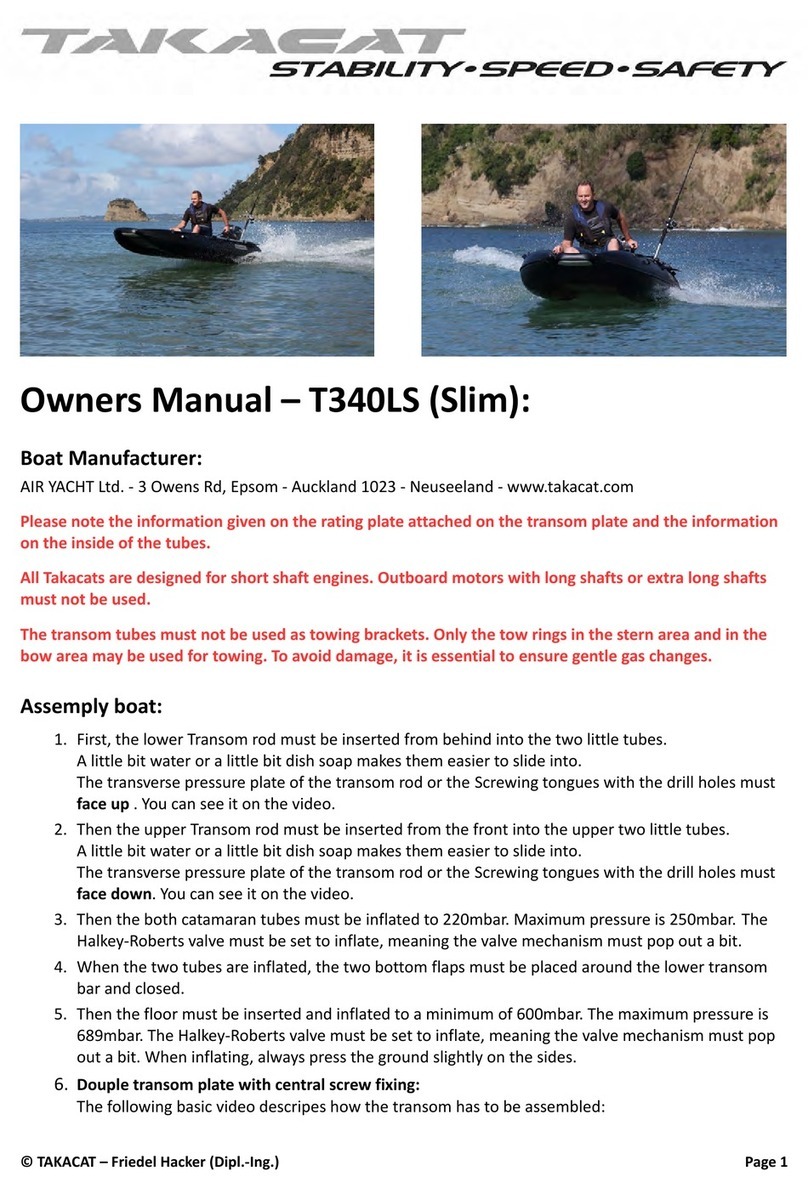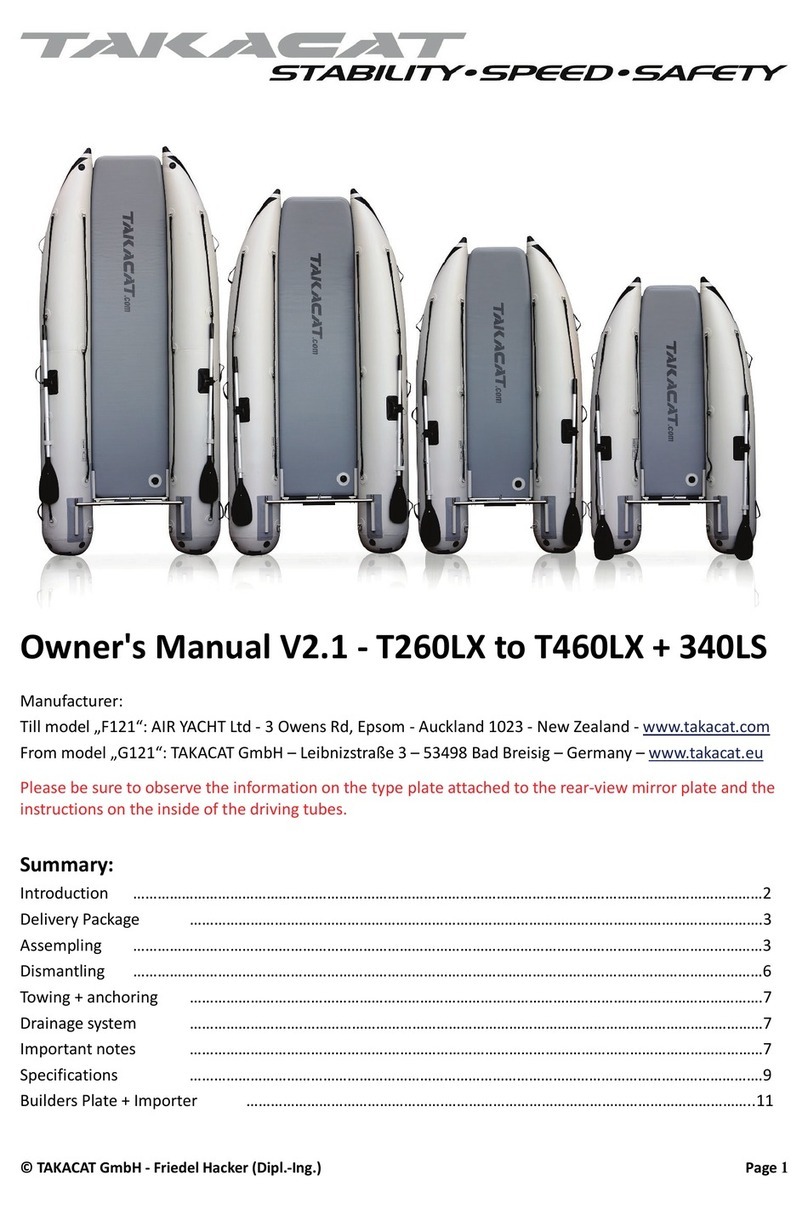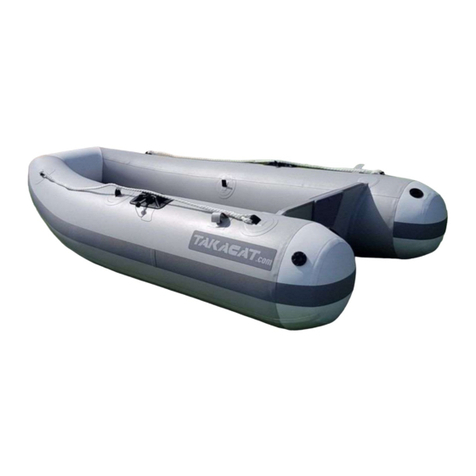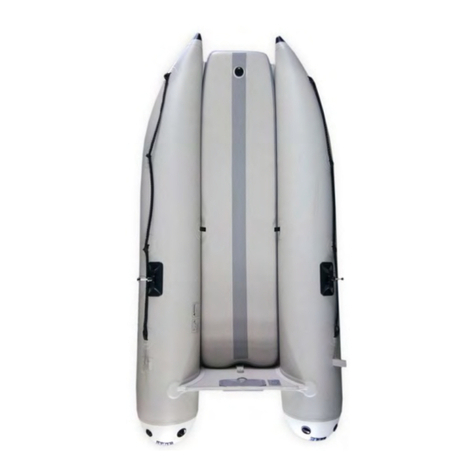
Takacat - Asia, Middle East & Australia Page | 10
pressure values if necessary. When the dinghy is not in use, we strongly recommend storage in the
shade or under a cover to avoid excessive heating and increase of air pressure in the tubes and the
high pressure floor. An inflatable boat that remains inflated for several days can lose pressure.
According to ISO 6185 a pressure loss of 20% within 24 hours is permissible.
5. With inflatable boats, it can happen that the valve seats settle slightly after production due to
heat fluctuations and movement, and air escapes as a result. In this case there are two valve keys in
the repair box. The valve key with the smaller teeth is compatible with the air inlet/outlet valves,
the valve key with the coarser teeth is compatible with the two overpressure safety valves. Using
the appropriate valve key, turn the valve insert slightly to the left to allow the lower sliding friction
to take effect and then turn it hand-tight to the right=>
https://www.youtube.com/watch?v=wLY4nj24-BE
6. At least before each trip, check the correct fit and strength of the transom components, including
the transom screw connections and the fastenings of any outboard motor that may be installed. It is
essential that you follow the instructions and safety regulations of the outboard manufacturer. The
Takacats are designed exclusively for outboards with short shaft. Outboards with long shaft or
extra long shaft must not be used.
7. The transom mounts including the screw connections are made of stainless steel grade 304, also
known as V2A steel. V2A-steel is harder than V4A-steel due to the higher carbon content but not
permanently seawater resistant, i.e. after each seawater operation the Takacat, especially the
transom construction incl. slip wheels, must be washed with fresh water, rinsed and dried. If you
use the Takacat as a tender it is sufficient if the rinsing with fresh water (freshwater) is done after
the return to the mother ship. If necessary a stainless steel cleaner and a seawater resistant
stainless steel protector is recommended, see www.inoxliner.com
The transom tubes must not be used as towing brackets. Only the tow rings in the stern and bow
area are used for towing. To avoid damage, it is essential to ensure smooth gas changes.
8. The transom plates are made of glued boat plywood with additional protective coating. The
wooden plates must be checked regularly for damage and repainted if necessary. The transom
plates are not designed for use as permanent watercraft. If the boat is to remain in water for a
longer period of time, the transom plates must be treated with an additional protective coating.
9. When installing an outboard (short shaft), it is essential to ensure that the support plates of the
toggle fittings of the outboard mounting do not press in the upper transom rod and cause structural
damage. If necessary use a spacer plate (applies only to open transom).
10. The driving tubes of the Takacats are provided with protective strips on the undersides.
Nevertheless you must avoid contact with sharp-edged objects to prevent damage. It is strongly
recommended to move the dinghy with extra care in areas with low water depth.
11. Avoid damaging the carrying hoses and the high pressure air floor of the Takacat with pointed
and/or sharp-edged objects.
12. Transport on the davits - It is best to put shackles through the holes of the transom wheel
suspension and fix them. These can then be used as rear lifting positions (applies only to open
transoms only). For the bow it is best to use a line that acts like a sling that supports under the boat.
Normally this line is guided through the outer D-rings on the Sport or the central D-rings on the LX,

